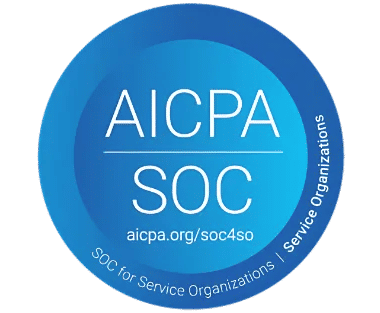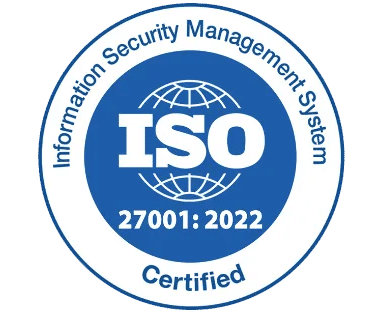How Revenue Cycle Software Simplifies Subscription Management

Managing subscription-based services can be a complex task for businesses, especially as they scale and evolve.
Keeping track of renewals, handling different pricing models, and ensuring accurate billing are all challenges that subscription businesses face. But with revenue cycle software in place, these challenges can be effectively handled.
Challenges Faced During Managing Subscription
1. Managing Multiple Subscription Plans
Businesses often offer different subscription plans to cater to various customer needs. Keeping track of multiple plans, their prices, and features can be complicated, especially as the business grows.
Ensuring that customers are charged correctly according to their plan is critical, and any confusion can lead to billing errors or dissatisfaction.
2. Managing Subscription Renewals
Ensuring timely subscription renewals is vital for maintaining a steady improvement. However, manually tracking renewals or relying on customers to remember when their subscription is due can lead to missed payments or late renewals, causing disruption in service and potential customer churn.
3. Tracking Discounts and Promotions
Offering discounts, trial periods, or special promotions can help attract new customers or retain existing ones.
However, manually managing these promotions can be challenging, especially when different customers receive different offers.
Keeping track of when discounts should end or how they should be applied can be challenging without a revenue management application.
4. Handling Subscription Changes
Customers may change their subscriptions, such as adding extra features or switching between plans.
While some systems allow easy changes, many businesses struggle with keeping track of these modifications accurately.
Ensuring that these changes reflect correctly in billing and account management can be tricky without a revenue cycle software in place.
5. Preventing Revenue Leakage
Revenue leakage happens when a business fails to capture all the revenue it should, such as missed payments, incorrect pricing, or unaccounted-for discounts.
Identifying and preventing these leaks is important for maximizing profitability and maintaining financial health. Businesses need robust systems to ensure all revenue is properly captured and accounted for.
6. Managing Trial Periods
Offering free trials is a great way to get new customers, but managing trial periods can be tricky.
Businesses need to track when the trial period ends, automatically convert users into paying subscribers, and ensure that they are billed correctly.
If these processes are not automated or well-managed, it can lead to confusion or missed revenue opportunities.
7. Ensuring Compliance with Regulations
Subscription businesses often must comply with various local and international regulations regarding billing, payments, and data protection.
Failing to comply can result in legal issues, fines, or damage to the business’s reputation. Ensuring that your revenue management application is up to date with relevant regulations is crucial to avoid compliance problems.
How Revenue Cycle Software Simplifies Subscription Handling
1) Automating Billing and Invoicing
Revenue management application plays a key role in automating the billing and invoicing process for subscriptions. This helps that customers are billed accurately and on time according to their subscription plan.
Automation reduces human error and manual work, helping businesses avoid missed payments, delays, and billing mistakes. This leads to smoother operations and improved cash flow.
2) Handling Payment Processing with Ease
Revenue cycle software helps manage payment processing, including handling payment failures. If a payment does not go through, the system can automatically retry the transaction or notify the customer to update their payment details.
This reduces the need for manual follow-ups and ensures that payments are processed without any gaps in service.
3) Reducing Administrative Overhead
Revenue cycle solution reduce the need for manual intervention in subscription management, such as handling billing inquiries, processing payments, and managing subscription statuses.
By automating these tasks, businesses can save valuable time and resources, allowing staff to focus on higher-value activities and reducing administrative overhead.
Key Features of Revenue Cycle Software for Subscription Management
1) Automated Billing and Invoicing
Rather than relying on manual invoicing, a revenue management application automates the process of creating invoices.
The application generates invoices on a regular basis according to the subscription terms and sends them to customers without manual intervention.
2) Subscription Renewal Management
Subscription renewal management is essential for maintaining a steady revenue stream in subscription-based businesses. Revenue cycle software automates renewals by sending reminders, managing grace periods, handling payment retries, and adjusting pro-rated amounts.
With automated payment recovery and flexible grace periods, businesses can minimize churn and ensure seamless billing. Efficient renewal management enhances customer retention, improves user experience, and maximizes revenue by reducing disruptions caused by missed payments or expired subscriptions.
3) Custom Bundles and Upselling
A good revenue cycle software can handle custom subscription bundles, allowing businesses to offer personalized pricing plans or additional services.
Moreover, these systems often include upselling features, helping businesses easily propose upgrades and cross-sells.
Benefits of Implementing a Revenue Cycle Software
While adopting a revenue cycle to manage contracts will significantly enhance your contract management processes, its implementation must be done correctly to maximize its benefits. Here are some best practices for implementing a contract management dashboard
- Reduction in Billing Errors: Manual billing processes are prone to mistakes, which can lead to overcharging, undercharging, or incorrect billing cycles. Automating these processes reduces the chance of human error and ensures that customers are billed correctly.
- Improved Customer Retention: Accurate billing and timely renewals help build trust with customers. When your billing is seamless and transparent, customers are more likely to stay engaged with your service and renew their subscriptions.
- Scalability: As your subscription base grows, so does the complexity of managing those subscriptions. A revenue cycle software can scale with your business, handling an increasing number of customers and transactions without the need for additional manual effort.
- Real-Time Insights: It provides real-time visibility into your subscription-based business, helping you track payments, churn rates, and overall financial health. This allows you to make data-driven decisions and adjust your strategies accordingly.
- Enhanced Compliance: Subscription businesses must comply with various regulations, especially in industries like healthcare and finance. A revenue management application can help ensure compliance with financial regulations, reducing legal risks.
Why Managing Software Subscriptions is Critical for Business Success
1) Optimizing Costs and Budget Allocation
Managing software subscriptions effectively helps businesses track all active subscriptions, avoid overpaying for unused or underutilized services, and ensure that they are getting the best value from their investments. By reviewing contracts and renewing services at the right time, businesses can allocate their budget more efficiently, saving money in the long run.
2) Preventing Unnecessary Renewals
Businesses often subscribe to multiple software tools across departments. Without a proper system to manage these tools, companies risk automatic renewals for services that are no longer needed, resulting in wasted funds.
Keeping track of subscription renewal dates and usage ensures that only necessary tools remain active, reducing unnecessary expenses.
3) Maximizing Software Utilization
If software tools are not properly tracked, businesses may overlook underused features or even fail to utilize the full potential of the software.
By regularly reviewing software usage across teams, businesses can ensure optimal value from each subscription, ultimately enhancing productivity.
4) Managing Multiple Software Tools Effectively
As businesses expand, it is common to end up with several software subscriptions across different teams.
Without careful tracking, it can become hard to keep up with renewal dates, pricing, and the specific features each tool offers.
By actively managing these subscriptions, businesses can ensure they are only using the most important and relevant tools, which helps avoid unnecessary confusion and clutter.
This makes it easier to stay organized and focused on the tools that truly add value to the business.
5) Boosting Productivity and Efficiency
Proper management of software make sure employees are equipped with the best tools for their roles.
By ensuring that tools are aligned with business goals and workflow requirements, businesses can improve employee productivity, enabling teams to perform tasks more efficiently and focus on achieving business objectives.
Why Managing Software Subscriptions is Critical for Business Success
Proper management of software make sure employees are equipped with the best tools for their roles.
By ensuring that tools are aligned with business goals and workflow requirements, businesses can improve employee productivity, enabling teams to perform tasks more efficiently and focus on achieving business objectives.
1) Preventing Unnecessary Renewals and Unused Services
Tracking subscription expirations helps businesses avoid paying for tools and services they no longer need. Many businesses subscribe to various software tools, and without proper tracking, they risk automatic renewals for tools that are underused or no longer aligned with business goals.
By staying on top of expiration dates, businesses can assess the utility of each subscription and make informed decisions, thus avoiding unnecessary expenses and optimizing their budget.
2) Ensuring Continuous Access to Essential Tools
Subscriptions to effective software often come with automatic renewals, and businesses rely on these tools to support daily operations.
Failing to track expiration dates can lead to gaps in service or interruptions in workflow if a subscription lapses.
By managing and tracking expirations, businesses ensure that they have timely access to the software they need without delays or service disruptions. This is especially important for tools that are integral to customer service, operations, or internal communication.
3) Keeping Your Tools Up to Date
By tracking subscription expirations, businesses can make sure they always have access to the latest versions of their tools.
This is important because updated tools often come with new features that can improve how the business operates.
Missing a renewal might mean losing access to these updates, which could affect productivity and keep the business from staying competitive.
Conclusion
Managing subscriptions can be complex, but Revenue 365 simplifies the process by automating billing, tracking renewals, and reducing manual tasks. This boosts operational efficiency, saves time, and ensures seamless payment processing. Imagine focusing on growth instead of worrying about subscription management.
Frequently Asked Questions
1. Does revenue cycle software automate invoicing?
Yes, revenue cycle software automates invoicing by generating and sends invoices based on the subscription terms. This ensures that customers are billed accurately and on time, reducing manual effort and minimizing billing errors.
2. Can revenue management application integrate with other business tools?
Yes, it can integrate with MS Teams, Outlook, SharePoint. Make it a seamless experience for the customers.
3. Does Revenue 365 manage subscription renewals?
Yes, it tracks renewal dates, sends reminders, and automates the renewal process to reduce churn and maintain a steady revenue stream.










_svxLrd-8yH.png)

_2VYSFUTN5m.png)

_JiluXJRGNl.svg)

_2djTKNocf.png)





_Rapo0hRMBy.png)










